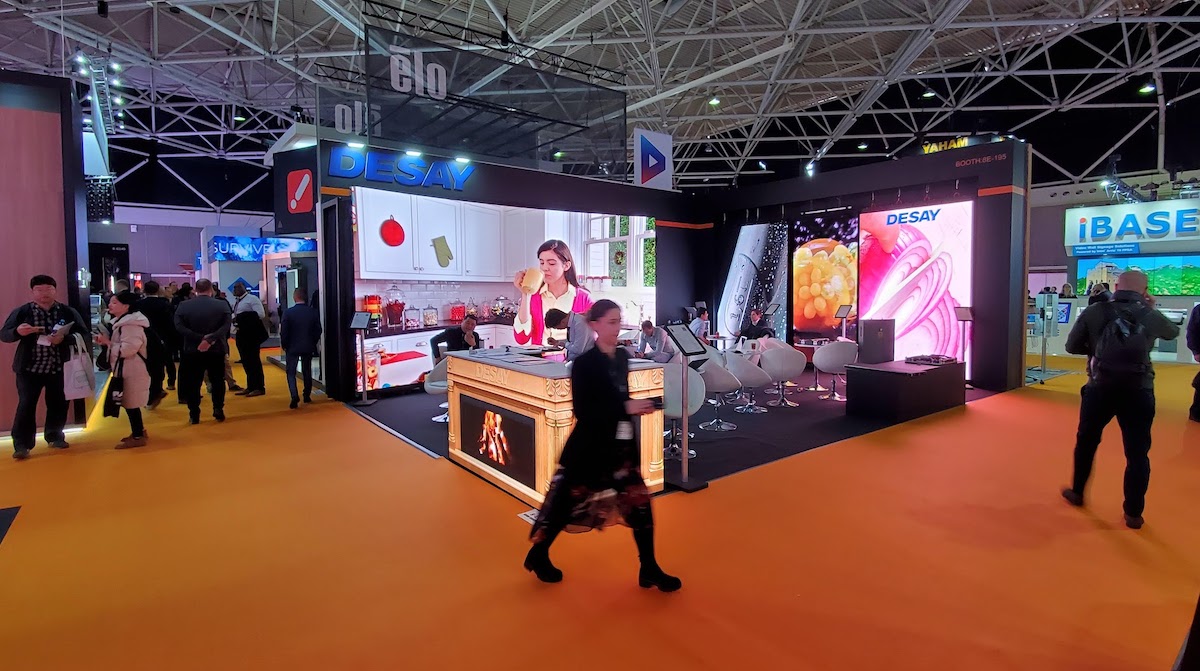
ISE Day 2 Impressions: Way Too Many Outdoor Screens, And One Too Many Pole-Dancing Robots
February 12, 2020 by Dave Haynes
It is remarkable how many companies seem to be in the outdoor LCD display business – there has to be at least 20 companies at ISE all showing various iterations of a super-bright display in a metal box, for advertising street furniture, wayfinding kiosks and drive thru promo and menu screens.
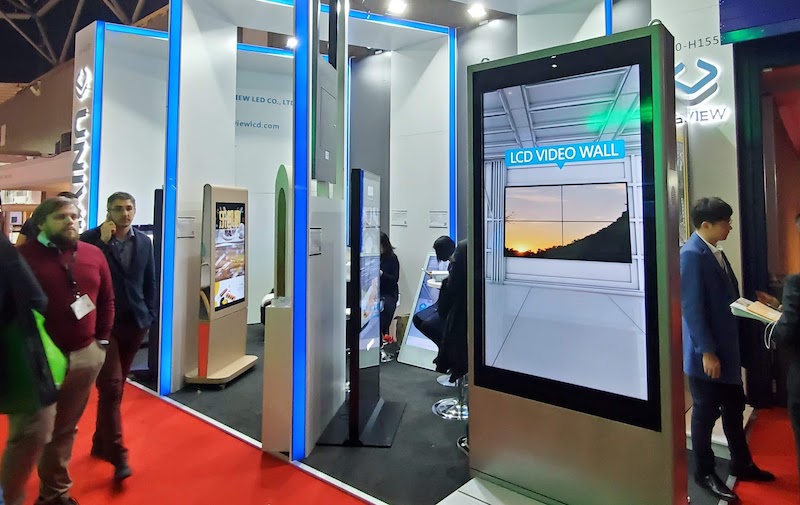
They all have their little twists and secret sauces, but that must be a tough game when you are selling – at least in part – the idea that your’s will last and the others won’t, when they both look perfectly fine on a showroom floor. The real keys are things like the ability to handle heat-load – stuff that’s hard to demo but important to test before ordering a bunch.
I am amazed at how many options there are for meeting room/workplace signage, though the crowded market has more to do with software than display hardware. John Wang, who runs IAdea, has seen enough potential in facility meeting room signage that his core focus is now that vertical.
You can buy IAdea’s little HTML5 media players, but most of his Taipei company’s business is providing all-in-one displays as part of meeting room solutions. IAdea’s booth in Hall 8 this year reflects that shift, with co-located demos by companies like Pronestor and Meetio.
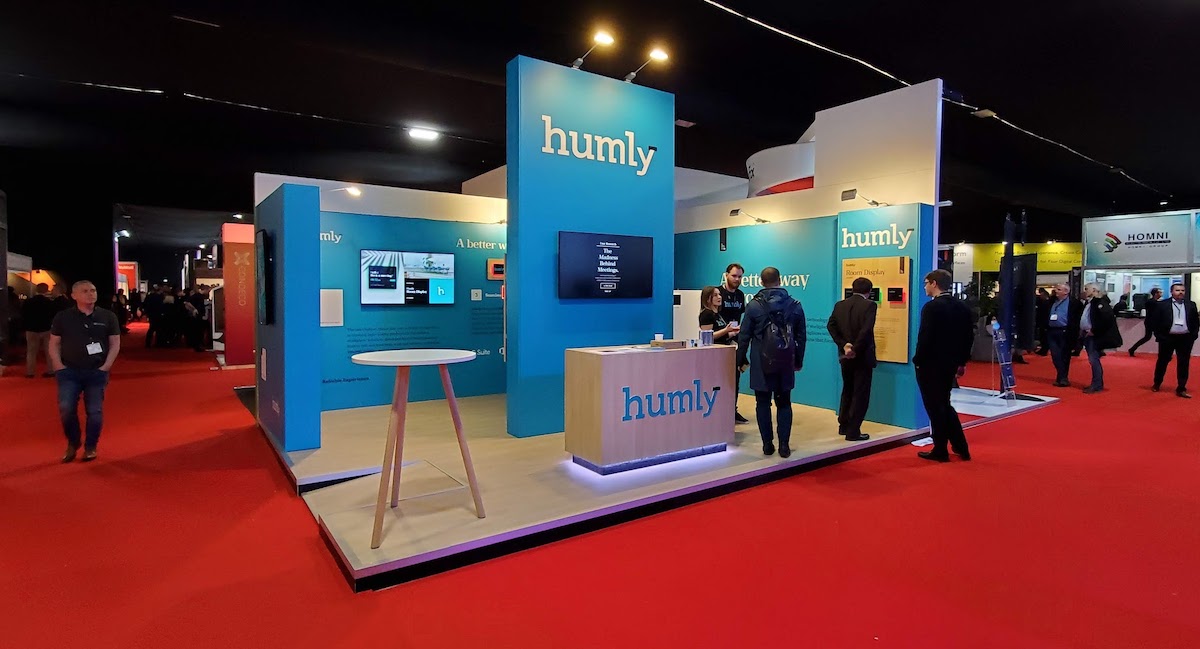
There were a bunch of unfamiliar, not terribly busy, meeting sign companies in the marquee tent thingee that has been bolted on to the front of the RAI.
It is possible, based on observation, to buy a different workplace collaboration screen from a different manufacturer for every workday in a year. There are soooo many of those, but then it is a much bigger addressable market than outdoor screens.
I spent most of Wednesday – Day 2 – in Hall 8, the big room assigned to digital signage. But there are little companies dotted around in other areas. I even saw a forlorn Shenzhen DS software company sitting lost in the back of a smart buildings section.
The hall was not what you’d describe as busy. Coronavirus worries have kept both exhibitors and browsers away this year. Reliably busy exhibitors like Scala had time on their collective hands, midday.
That said, there are still lots of people wandering through the hall, and I had the luxury of time to chat with people who’d more normally be stretched thin by meeting and demo demands.
One of the revelations I had through the day was the existence of something called OpenVINO, an open-source toolkit from Intel that enables companies to rapidly develop AI/machine learning applications for computer vision. So they can develop for free functionality that is similar to what is commercially marketed by companies like Quividi and AdMobilize.
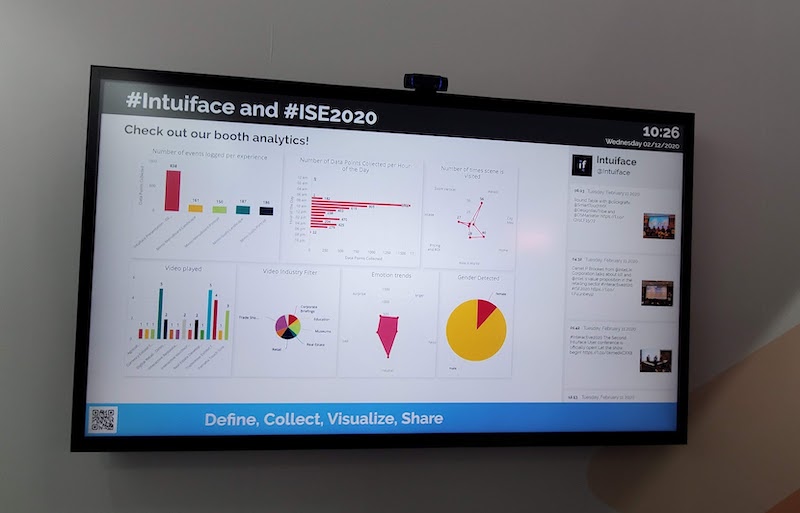
I saw very different demos from Intuiface, and from Cineplex Digital Media, which was co-located in Intel’s booth and was based on using machine learning to dynamically serve content to viewers captured by a RealSense camera and analyzed based on pattern recognition. That mashes up with learned behaviors – Cineplex does QSR menus for multiple clients, as well as in its own cinema concession – to effectively do the old right message, right time thing.
A few people urged me to go over to see Hungary-based Wallboard at a booth in what I’d call the Hall 8 Overflow Zone. It is an area that was food concessions and dining tables when I first came here in 2016, but growth has consumed that space for more booked stands,
The company has a US owner and office, but has most development in Hungary. What was interesting about these guys is a collective determination to go beyond the “simple signage” that many other companies tout as their prime appeal. The Wallboard guys have what appears to be a user-friendly UX, but the platform is very deep when it comes to things like data and device integration.
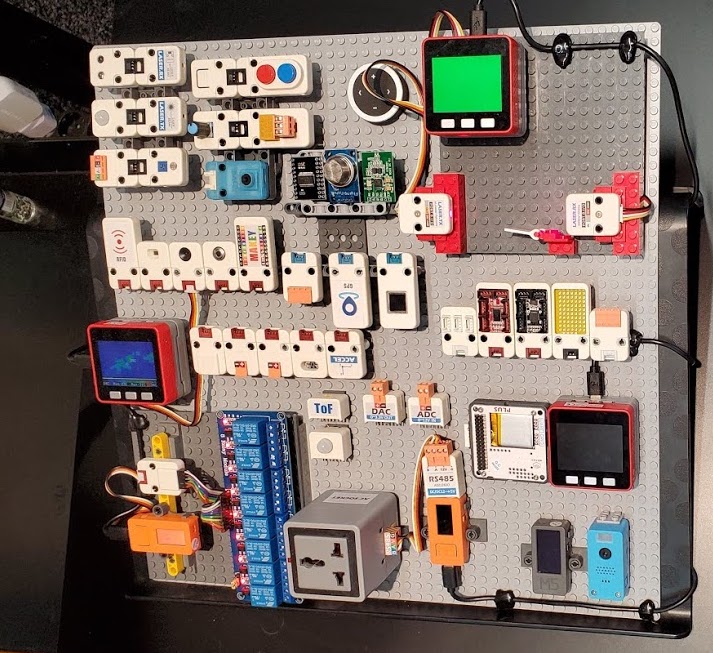
I saw a demo of several industrial-grade sensors that could be easily read, set up and used to deliver content triggered by actions like doors opening, lasers being tripped or devices being recognized. One demo showed how sensors could read employees arriving or leaving a workplace, weighing them to sense if materials were being smuggled out, and testing arrivals using a breath sensor that picks up hints of alcohol.
I had a good chat, as well, with Telelogos, a long-running French software firm that has very deep, detailed device management and data integrations. A bazillion software companies can do digital signage basics like target and play out content. What separates the boys from men is deep device management, which Telelogos has.
Both companies are Euro-centric but aspiring to enter the US market via partnerships.
I popped by the Christie booth to see the 3D LED MicroTiles, learning the target for the product is attractions and museums, as well as business imaging applications like architectural design and medical.
I have minimal enthusiasm for glasses-based 3D, but have to concede this screen looked pretty darn good with goggles on.
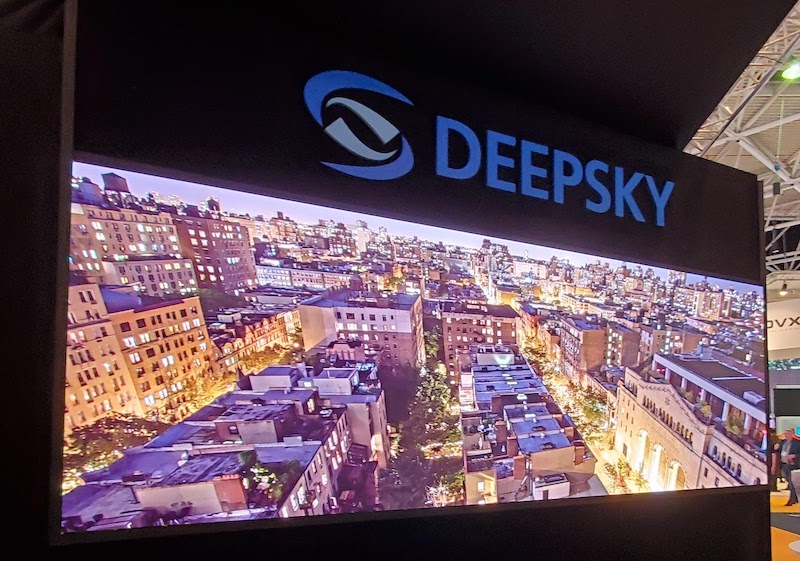
A couple of years ago, I was in China and Hong Kong, stopping in the latter to see the chip-on-board LED product of the startup DeepSky. Things have come a long way and the company has a 0.9mm Chip-On-Board 5K screen on the floor that looks really good. I saw some displays Tuesday that touted their contrast levels, but they did not have the deeeeeep blacks this big fella had.
One of the nice things with this tech is a layer over the LEDs that protects the screen from damage – something that plagues conventional fine pitch LEDs if they are within reach of humans. This handles bumps, can be wiped with a wet towel, and comes in at maybe half the price of a Sony Clear LED.
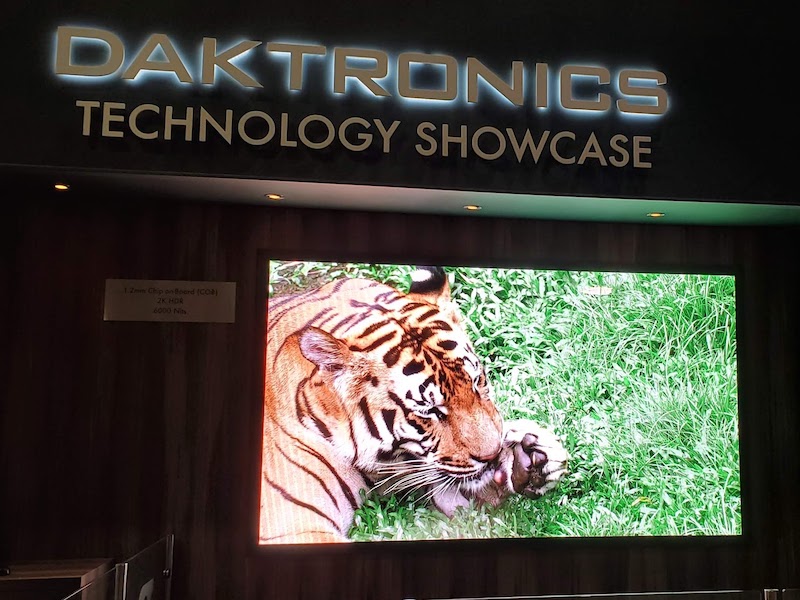
I also liked a super-bright COB-based tanning booth of a screen at Daktronics’ booth – a 1.2mm pitch display pushing 6,000 nits, which is way overkill for indoor needs (3,500 is what you need outside).
![]()
And SiliconCore had some very nice looking LEDs – also COB. That said, there are many, many companies with unfamiliar names that have good LED product – conventional, transparent, for floors. There is some low-rez or low quality stuff aimed at the budget market, but that’s a minority.
I have spent very little time looking at LCD, in general, because that tech has kinda peaked out in size and capabilities, unless we talk Samsung’s QLEDs. There is a bit of transparent OLED here and there, but the OLED King LG is not at ISE. It won’t be at DSE either.
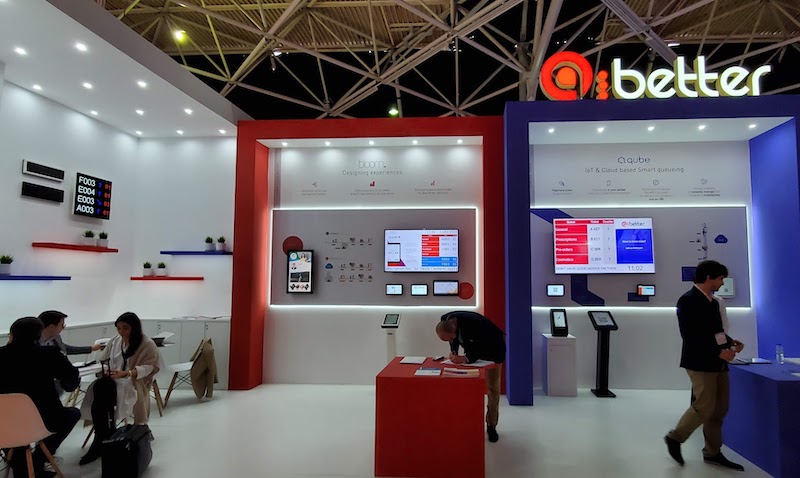
A company I first saw a few years ago, and quite liked, is back with a big Hall 8 booth. Portugal’s Q-Better has a great name (they do queue management) and a nice, tidy and logical product line-up. I mention them because the company has a new offer that allows third-parties, like digital signage CMS platforms, to stick with their core capabilities, but add Q-Better’s slick queue management notices in a screen zone, just using a URL.
So a CMS could chase a job that asks for line management tools, without putting any precious resources to developing those tools.
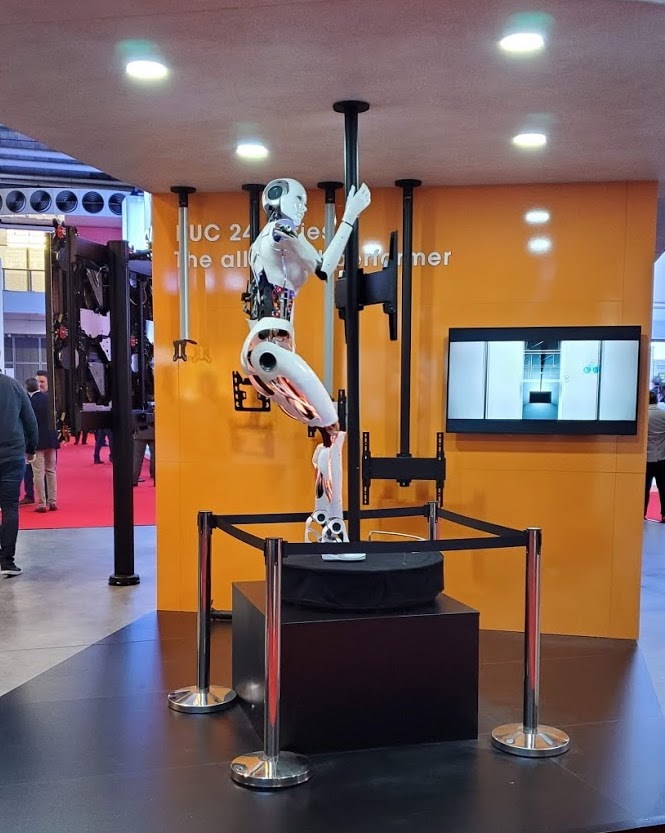
One last thing – spotted in one of the main halls at a stand for a mounts manufacturer: a robot that pole dances.
It would be fair to ask why. Or for women to seriously roll their eyes. The weirdest thing about the weird display – it’s just kinda there and subtle, and many people just walked on past, without even seeing it.
The stripper-bots have been spotted at other male-dominated trade shows like CES.
Thursday is Day 3.



Leave a comment